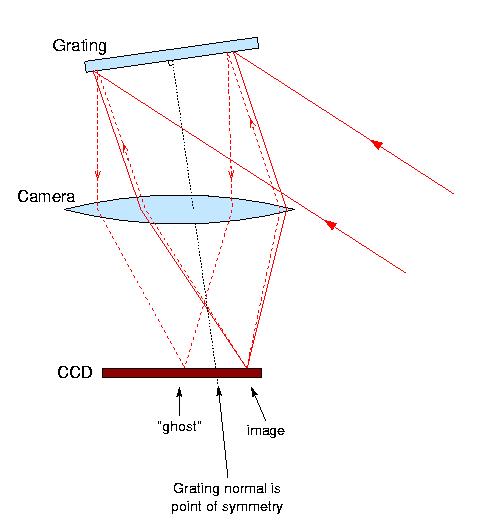
Light from the collimator enters from the right, and is dispersed by the grating, forming an image at each wavelength on the detector. Reflected or scattered light from strong spectral features, such as very intense night-sky lines, passes back through the camera, becoming parallel beams at the grating where a portion is reflected as if the grating were a simple mirror. This "zeroth-order" light is then re-imaged on the detector. The projection of the grating normal is a common point of symmetry for all "primary-ghost" pairs.

